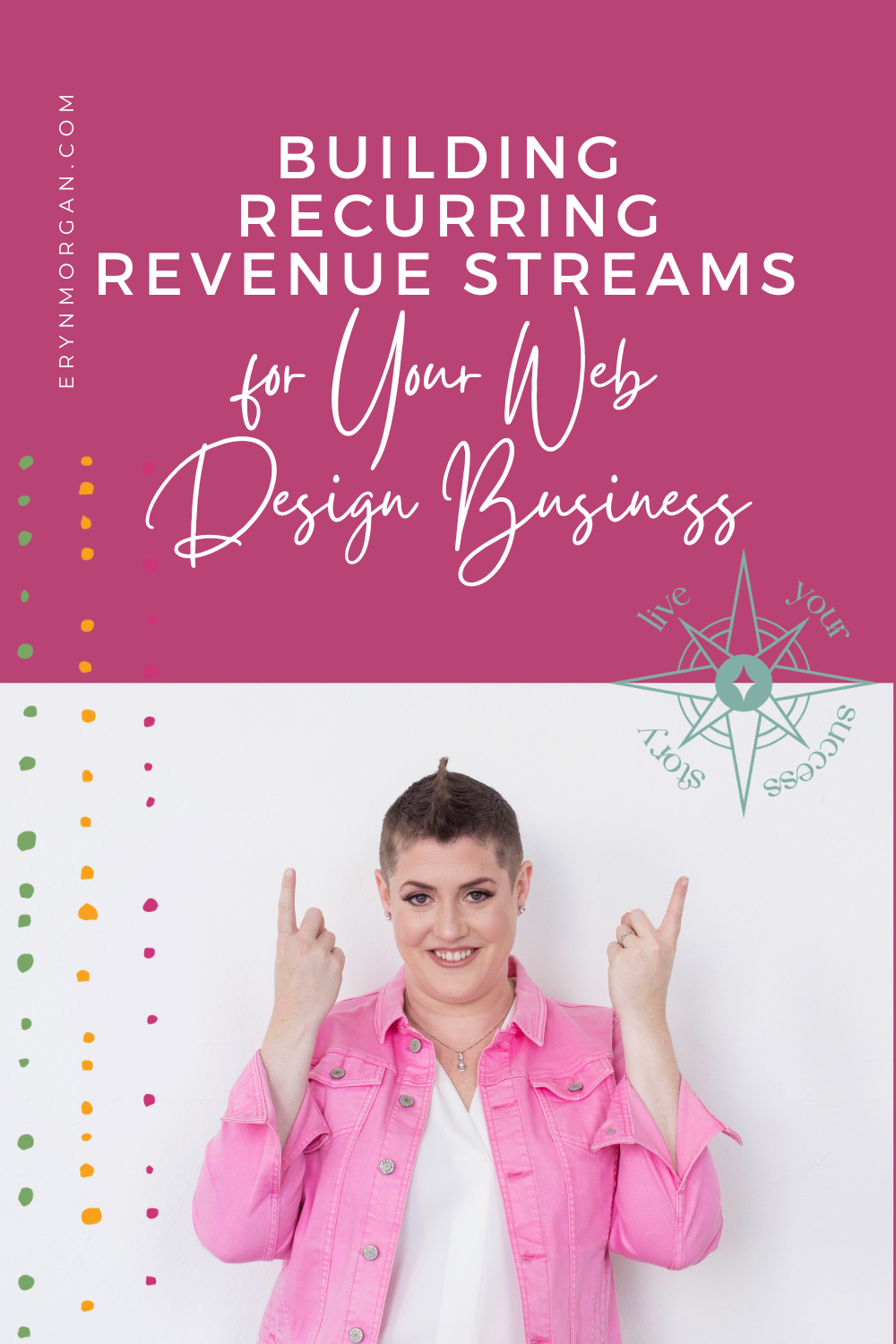Have you ever finished a web design project feeling like you worked your tail off but barely made a profit?
Or maybe you’ve undercharged for your services, leaving money on the table and feeling undervalued?
Pricing is often one of the biggest challenges for web designers who own solo creative studios or web design agencies. It’s a delicate balance between attracting clients and ensuring your business is sustainable.
But here’s the truth: learning how to price web design services for profit is not just about making money; it’s about valuing your skills, your time, and your expertise while keeping the business needs in balance with your own.
Why Pricing for Profit Matters in Your Web Design Business
Setting profitable prices is crucial for the long-term success of your web design business. It allows you to:
- Cover your costs: This includes overhead expenses like software, tech and equipment, education, marketing, as well as your own salary and benefits.
- Reinvest in your business: Profitable pricing allows you to invest in your growth, such as hiring team members, upgrading your equipment, or expanding your services.
- Achieve your financial goals: Whether it’s saving for big purchases, investing for the future, or taking a dream vacation, profitable pricing helps you achieve your personal financial goals.
- Build a sustainable business: By ensuring your business is financially healthy, you can weather economic downturns, invest in your future, and create a legacy for yourself.
Understanding Your Costs as a Web Designer
Before you can set profitable prices, you need a clear understanding of your costs. This includes both direct and indirect costs.
- Direct Costs: These are expenses directly related to delivering your web design services. Think software subscriptions (like Adobe Creative Cloud or Figma), website hosting, stock photos, fonts, and any plugins or themes you regularly purchase.
- Indirect Costs: These are the expenses that keep your business running smoothly, even if they’re not tied to a specific project. For those working from home, this might include:
- Marketing and Advertising: Website costs, email marketing software, social media ads, or the cost of hiring a marketing expert.
- Education and Professional Development: Courses, workshops, conferences, or coaching programs to keep your skills sharp.
- Team and Outsourcing: Payments to subcontractors, virtual assistants, or other team members.
- Home Office Expenses: A portion of your internet, utilities, and home insurance can often be deducted as business expenses (consult with a tax professional for specific guidelines).
- Other Indirect Costs: This could include things like accounting software, insurance, legal fees, or professional memberships.
To calculate your costs accurately, track your expenses meticulously and categorize them appropriately. There are many tools available to help you with this, including:
- Accounting Software: Quickbooks Self-Employed, Xero, or Freshbooks are popular choices.
- Spreadsheets: You can create a simple spreadsheet to track income and expenses.
- Expense Tracking Apps: Expensify, Mint, or Personal Capital can help you monitor your spending.
By diligently tracking your expenses, you’ll gain a clear picture of where your money is going and can make informed decisions about your pricing strategy.
Determining Your Desired Income for Web Design Projects
Instead of focusing solely on profit margin, let’s shift our attention to your desired income.
How much do you want to earn from your web design business? This should include your salary, benefits, and any profit you want to reinvest in your business or use for personal goals.
To determine your desired income, consider your lifestyle, financial goals, and the number of hours you’re willing to work.
Once you have a clear income goal in mind, you can work backward to calculate the required revenue and pricing for your services.
Capacity-Based Pricing: Aligning Income with Client Capacity
Capacity-based pricing is a powerful approach that connects your pricing to your overall income goals and the number of clients you can realistically serve.
Here’s how it works:
- Calculate Your Annual Income Goal: Determine the total income you want to earn from your web design business in a year.
- Determine Your Working Weeks: Decide how many weeks you want to work in a year, taking into account holidays, vacations, and any other time off.
- Calculate Weekly Revenue Goal: Divide your annual income goal by the number of working weeks to determine your weekly revenue target.
- Assess Client Capacity: Determine how many clients you can realistically onboard and serve each week, considering your current workload and resources.
- Calculate Average Offer Price: Divide your weekly revenue goal by your client capacity to determine the average price you need to charge for your offers.
For example, if your annual income goal is $336,000 and you want to work 46 weeks in a year, your weekly revenue goal would be $7,305. If you can serve two clients per week, your average offer price needs to be $3,652.50.
This approach provides a flexible framework for pricing your offers, allowing you to adjust your pricing based on your capacity and income goals.
Mindset and Pricing: Normalizing Big Numbers
Pricing can be a mental game as much as a financial one. Many web designers struggle with sales because hearing themselves say numbers that don’t match what they’d spend on the same services can throw them off.
One helpful technique to overcome this is to practice saying big numbers out loud. For example:
- “That dress costs $1,250 dollars!”
- “That Corvette is $300k.”
- “Wow, my neighbors just listed their house for $1.25 million dollars.”
It’s not about judging the numbers, but about normalizing them for your ear/brain connection. By hearing yourself say these numbers confidently, you’ll increase your comfort level when discussing pricing with clients.
How to Price Web Design Services
Once you understand your costs, desired income, and have worked through any mindset blocks, you can start setting prices for your web design services.
Here are some common pricing models:
- Hourly Pricing: Charging clients an hourly rate for your time. This is a straightforward approach, but it can leave you open to being compared on your price versus others.
- Project-Based Pricing: Setting a fixed price for the entire project. This provides clarity for both you and the client, but it can be less flexible if the project scope changes.
- Value-Based Pricing: Pricing your services based on the value you deliver to clients. This approach focuses on the benefits and outcomes of your work, rather than just your time. Learn more about crafting value-based offers in How to Create Web Design Offers.
Each pricing model has its pros and cons, and the best choice for you will depend on your specific services, client preferences, and business goals.
Hourly Rate as a Guideline (Even if You Don’t Charge Hourly)
Even if you don’t charge by the hour, it can be helpful to calculate your desired hourly rate as a guideline.
This can help you assess whether your project pricing aligns with your income goals and prevent you from undercharging for your time.
Using the example from earlier, if your annual income goal is $336,000 and you want to work 35 hours per week for 46 weeks, your desired hourly rate would be $208.72.
Now, let’s say you offer a standard website package for $8,500. To ensure this aligns with your hourly rate, you can divide the package price by your hourly rate ($8,500 / $208.72 = 40.73 hours). This means you shouldn’t spend more than 40.73 hours on this project to stay on track with your income goals.
This approach helps you keep your time investment in check and ensures that your project pricing is aligned with your overall financial goals, even if you don’t explicitly charge by the hour.
Real-World Examples:
- Hourly Pricing: A freelance web designer might charge $75-$150 per hour for their design and development services.
- Project-Based Pricing: A web design agency might charge $5,000-$20,000 for a complete website redesign project.
- Value-Based Pricing: A web designer specializing in e-commerce might charge a premium price for their services because they can demonstrate how their designs directly increase sales and conversions.
Linking Pricing to Your Offer Stack
Remember, pricing should be considered in the context of your overall offer stack.
Each offer in your stack should be priced strategically to achieve both your business goals and match your clients’ needs.
You can learn more about pricing an offer stack in this post about How to Create Profitable Web Design Packages.
Price Web Design Offers Strategically for Profit
Pricing your web design offers for profit is crucial for building a sustainable and successful business.
By understanding your costs, determining your desired income, and choosing the right pricing model, you can ensure your business is financially healthy and you’re fairly compensated for your expertise.
Remember, pricing is not just about the cost for a website; it’s about taking into account your business and personal goals and creating a bigger picture look at your profitability.
By setting profitable prices, you’re not only investing in your business but also in your own future and well-being.
Ready to Price Your Web Design Offers Profitably?
This is one of the number one things my new clients request support with when they start working with me. I totally geek out over this stuff, so if you’d like some support, you’ll be making my day when you reach out! Schedule a call here.


